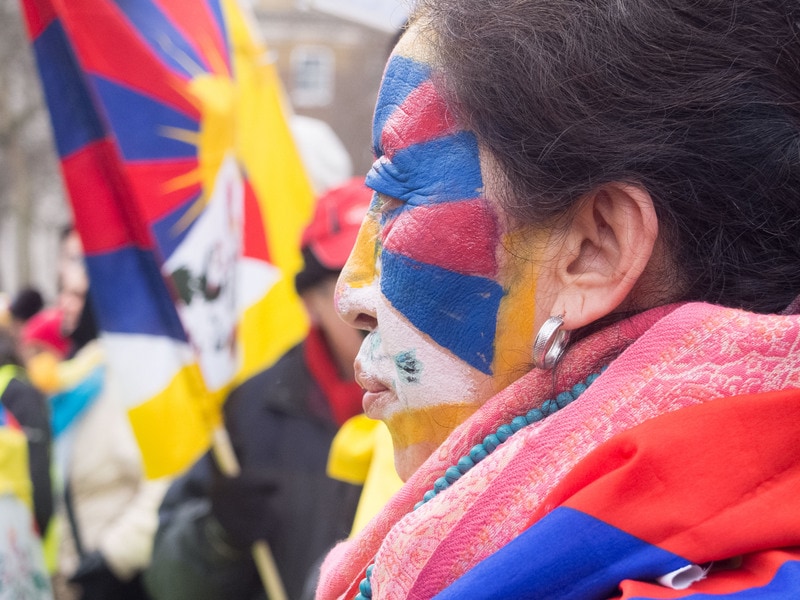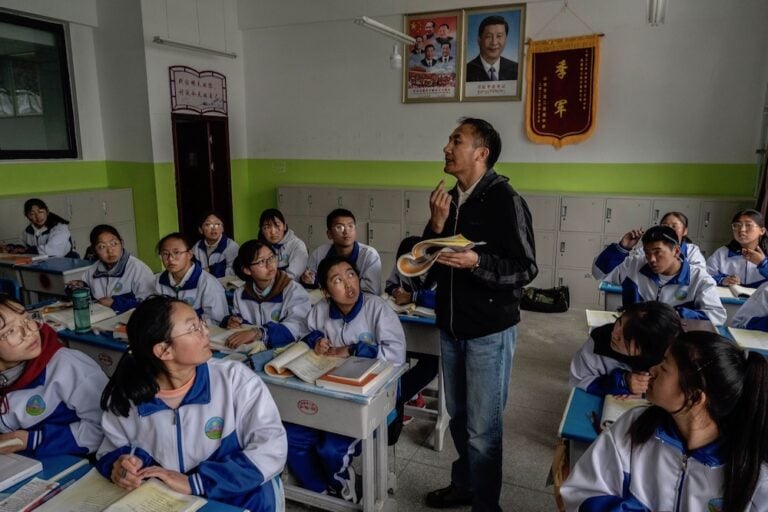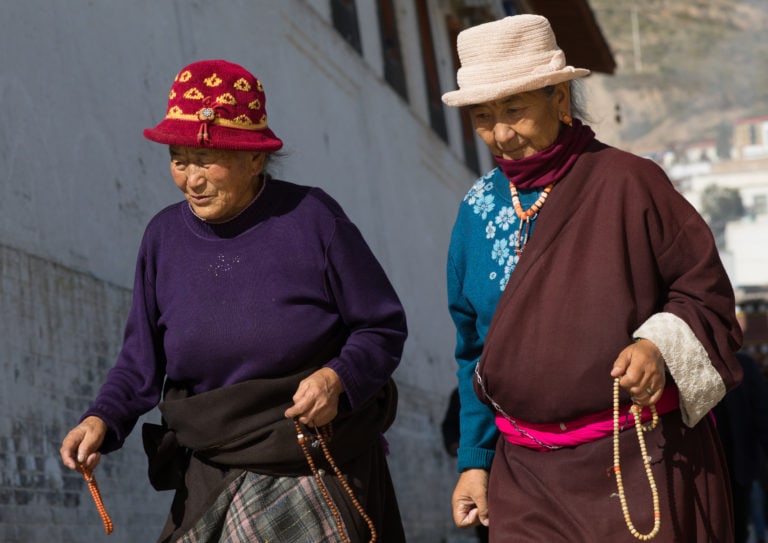The Chinese government's announcement that it will expand a new security system throughout Tibet despite an already heavy security presence and little evidence of violent threats to the state raises grave concerns about threats to human rights.
The Chinese government’s announcement that it will expand a pervasive new security system throughout the Tibet Autonomous Region (TAR) despite an already heavy security presence and little evidence of violent threats to the state raises grave concerns about threats to human rights of this intrusive monitoring across the region. Officials announced the system’s expansion in the annual TAR work report, which was released on February 7, 2013.
Official documents describe the new system, known as “grid” (Tib.: drwa ba, Ch.: wangge) management, as designed to improve public access to basic services. But the system also significantly increases surveillance and monitoring, particularly of “special groups” in the region – former prisoners and those who have returned from the exile community in India, among others. Expansion of the grid system, alongside the construction across Tibet of over 600 “convenience police-posts” with high-tech equipment to monitor daily life, and increasingly active volunteer security groups known as “Red Armband Patrols” (Tib.: dpung rtag dmar po) in 2012, means that surveillance is now a pervasive part of life across the region.
“Chinese authorities should dismantle this Orwellian ‘grid’ system, which has been imposed while the government continues to avoid addressing popular grievances,” said Sophie Richardson, China director. “Its purpose appears to be surveillance and control, and it encroaches on Tibetans’ rights to freedom of expression, belief, and association.”
This development and other recent security increases expand even further a longstanding practice of carrying out security policies much more restrictively in Tibet than in most of the rest of China.
In January 2012, following instructions from China’s then-President Hu Jintao, the TAR government announced that it would implement the grid system, first introduced in 2007 in Beijing, as the key to “social stability maintenance” in Tibet, thus “putting a dragnet into place to maintain stability.” On February 17, 2013, Yu Zhengsheng, Standing Committee member of the Political Bureau of the Communist Party of China (CPC) Central Committee and the top official in China in charge of nationality policy, confirmed that the system should be put into effect throughout the region to form “nets in the sky and traps on the ground,” an indication that the system is primarily designed for surveillance and control.
The new grid system grows out of the nationwide “social stability maintenance” (Ch.: weiwen) policy drive, and establishes a new sub-local layer to the administrative system in urban and rural areas across China. According to one Chinese scholar, the grid system is designed to ensure that “information is proactively gathered about people, events, and things so as to build up a database of urban components and events . . . through which relevant departments and work units can proactively uncover problems in a timely manner.”
Reports in local-language media in Tibet refer to the security function of these offices but also emphasize the role of these staff in delivering social services, such as providing employment, medical care, and schooling for the children of migrants and local residents, saying they are “to create conditions of effective social management and participation in a harmonious society and a good situation for all.”
The system is staffed mostly by civilians rather than government officials, usually with a Communist Party member in each office, to manage surveillance and control operations. Party membership in Tibet requires articulating opposition to, among other things, increased Tibetan autonomy, independence, or the Dalai Lama, thus raising concerns that political criteria rather than violations of law may serve as the basis of surveillance, searches, or detentions.
In the new grassroots level of urban administration, each “neighborhood” or “community” area in towns will be divided into three or more grid units. At least eight pilot units were set up in Lhasa, the regional capital, in April 2012, and in September were declared to have “achieved notable results.” On October 9, the regional party secretary stated that because “the Lhasa practice has fully proved the effectiveness of implementing grid management to strengthen and innovate social management,” the system should be made universal in “the towns, rural areas, and temples” of the TAR.
Published instructions for “stability maintenance” require special monitoring of “critical groups.” These include former prisoners, nuns, and monks who are not resident in a monastery or nunnery, former monks and nuns who have been expelled from their institutions, Tibetans who have returned from the exile community in India, and people involved in earlier protests, according to a public notice displayed in Lhasa in July 2012.
The grid offices are closely linked to “Red Armband Patrols,” which also typically include local Communist Party members. Such patrols handle traffic and low-level street management throughout China at times of extra tension, but, according to Tibetans from Lhasa who spoke with Human Rights Watch, since May 2012 these patrols have been involved in much more intrusive actions in Tibet, including searching homes for materials relating to the Dalai Lama or other perceived indications of dissident opinion.
Searches of residences are not legal in China unless carried out by police according to legal procedures, and expanding authority to carry out such surveillance greatly increases the risk that people’s privacy will be violated, or that they will be deprived of their liberty on vague or unspecified grounds.
Human Rights Watch has received detailed accounts of four home raids carried out by Red Armband Patrols attached to grass-roots offices in Lhasa searching for photographs of the Dalai Lama. In one case, in September 2012, a Tibetan woman named Choedron, about 65, from Kyire, a part of the Old City of Lhasa, was briefly detained for arguing with Red Armband Patrol members who tried to search her family’s shrine room. Her son, Lobsang Dorje, 26, the owner of a shop selling mobile phones and other electronic items, was detained, severely beaten, fined, and made to sign a confession after he protested his mother’s detention. In another case, volunteers belonging to a Red Armband Patrol entered the apartment of an elderly Tibetan woman in the Old City of Lhasa, searching for incriminating items. The two other cases also involved plainclothes security teams aided by volunteers searching homes in Lhasa for photographs of the Dalai Lama.
In addition, by July 2012, 676 permanent, street-side “convenience police-posts” (Ch.: bian minjing wu zhan) had been set up in towns across the region. These are equipped with computers and video technology for computerized checks of people passing through on a “case-by-case” basis. Police officers who staff the posts are required to be on duty around-the-clock.
Other restrictions are being introduced in the region. Human Rights Watch has received numerous first-hand reports of Tibetans being subjected to searches and being required to pass through X-Ray scans before entering areas considered “critical” in Lhasa. In 2012 Tibetan authorities set up a “TAR Social Stability Maintenance Command” in Lhasa, and established “Stability Maintenance Work Groups” at every level of the administration, responsible for exercising control over online and phone communications.
Stability maintenance teams and the new street-side police-posts are maintaining records of all vehicles entering the city or area. In some areas, official media reports said, the new police-posts are required to keep records of “those going outside the locality” and to register each of them individually, with some checkposts required to provide “security checking and proper registering of the floating population” as well as the details of “every single vehicle and individual.” In August, in a move presumably intended to deter incidents of self-immolation, authorities announced that people would have to give their real names to buy gasoline for vehicles or other uses.
Standard policing procedures throughout China involve uniformed police patrolling streets in every city, but since 2008 armed paramilitary units as well as police have been stationed round-the-clock at each corner of the Tibetan quarter of Lhasa. A December 21 article in the official media showed photographs of a Red Armband Patrol operating just outside Lhasa, although the patrols were introduced in May 2012 supposedly to provide security just for the run-up to the 18th Party Congress, which concluded in mid-November. Leaders in the region have since called for these security activities to continue into 2013.
“China’s effort to impose pervasive surveillance on every street is not likely to make Tibet safer,” Richardson said. “But the increased surveillance will surely increase pressure in an already tense region, even while the Tibetan people are still waiting for Chinese attention to rampant violations of their rights.”
Click here for additional background information.



